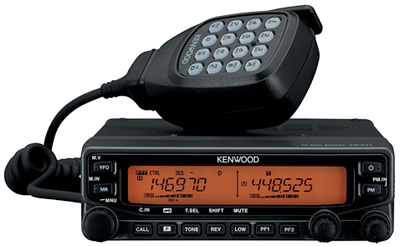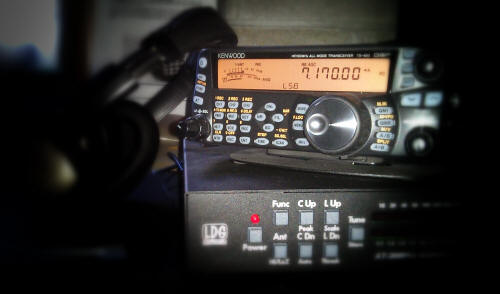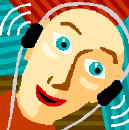Courage Center Handiham World Weekly E-Letter for the week of Wednesday, 28 November 2012
This is a free weekly news & information update from Courage Center Handiham System. Our contact information is at the end, or simply email handiham@couragecenter.org for changes in subscriptions or to comment. You can listen to this news online.MP3 audio stream:
http://www.handiham.org/audio/handiham.m3u
Download the 40 kbs MP3 audio to your portable player:
http://www.handiham.org/audio/handiham.mp3
Get this podcast in iTunes:

http://www.itunes.com/podcast?id=372422406
RSS feed for the audio podcast if you use other podcasting software:
http://feeds.feedburner.com/handiham
Welcome to Handiham World.
What do you know about the HF bands?

It's starting to look like newly-licensed amateur radio operators need some help understanding which band to use and when.
Back in the day, I entered amateur radio by earning a Novice license that was valid for one year. In that year, I was expected to get on the HF bands and increase my Morse code speed so that I could pass my General exam and use phone and more HF frequencies. In that year, I learned to use 80 meters in the nighttime hours for long-distance contacts and during the daylight hours for more local contacts here in Minnesota. 15 meters would prove useful in the daylight hours for worldwide communications, provided the band was "open" - and one learned that when it was not open, no amount of calling CQ would ever yield a contact. There was no getting on the air without an antenna, and for a teenager with almost no budget for ham radio, that meant building my own antennas. That's a good way to learn that an antenna for the 80 meter band takes up a lot of real estate while one for the 15 meter band will fit in nearly any yard.
Once I passed my General under the keen eye of an FCC examiner in St. Paul, MN I was ready to take advantage of all the HF bands. That meant more antenna building, which in turn taught me more about the relationship of conductor length and spacing to wavelength. Since directional antennas were said to pull in more DX, I had to build a beam antenna. I was on the roof of my parent's house putting the final touches on a three element 15 meter beam when a kid rode up on a bike and called up to me to ask if I was a ham radio operator. We both ended up enjoying amateur radio as lifelong activities. One of the things we both liked was participating in our local radio club's ARRL Field Day, another prime learning activity. At the Field Day site one could put up antennas for various bands and learn the physical characteristics of antennas designed for different frequencies. Even better, there were seasoned operators at the Field Day site to teach the newbies like us when the bands were open and which bands would yield the most contacts at any given time of day. Since Field Day usually includes different modes and power levels, we were able to learn first-hand which was most effective for a given type of communication considering band conditions and the competition.
There's no point in suggesting that "the good old days" were better than today. I would never do that, because we enjoy such a wide range of opportunities in amateur radio right now!
But... We do have to acknowledge that people enter amateur radio through a different license these days. The Technician license is most often considered a portal to the VHF and UHF bands even though it does confer some limited HF privileges. The typical Technician operator will gravitate toward FM repeater operation and will not consider HF operation until passing General. With the General Class CSCE in hand after the VE session, the new General operator now has really serious HF privileges and virtually no HF experience.
Now, let's look at what this means.
- Since I administer the remote base HF stations, I notice what bands and modes people are trying to use at different times of the day and night. I observe connections via Echolink for the receive function, too. Users are often connected and listening to what must sound rather odd since they are using the wrong sideband for a given HF band. Others are listening or trying to make contacts at a time of day when a band is almost certainly dead.
- In my work I often hear from new General Class licensees who are eager to get on the air but who have no idea that HF antennas are much, much larger than the VHF antennas they are used to. They also have not considered the kind of HF operation they really want to try. They are blissfully unaware of the problems they will encounter with RF interference. Some live in apartments with no access to outdoor space for antennas. I know I am going to have to manage expectations for folks who have already sunk a bundle into a new HF station without considering the lack of space for an outside antenna system. Others have plenty of space for antennas but no help to put them up.
- Once on the air, the new General operator has no experience with the different operating practices found on HF. Typically the new General will not have been a short-wave listener and will not have much (if any) exposure to how a typical contact is made on the HF bands. Even then, he or she will be unaware of the difference between contest operating and casual contacts and what expectations there are for each.
Fortunately, we have plenty of learning resources. The internet has many HF resources that include descriptions of each HF band and its characteristics. Radio clubs still enthusiastically participate in ARRL Field Day, which remains one of the best places to get hands-on experience putting up antennas for various bands and dealing with station layout, band conditions, and interference. In fact, your local radio club is still an excellent learning resource because club meetings will sometimes include programs on HF operation and antennas and many of the attendees will have extensive HF experience and be willing to share. Some clubs have a "MAP", or "Member Assistance Program", that can help you with station layout and antenna installation. Experienced HF operators on the club's MAP team may be willing to visit your home and take measurements of your lot in order to recommend an effective HF antenna system.
If you are new to HF, it is normal to have many questions about how to get on the air. You most likely have not been on HF before, even if you have been a Tech for years. Don't be afraid to ask for help, and don't expect to learn everything all at once. It will take time and patience for you to learn which bands are best for whatever communications you want to try. Since band conditions are variable and change radically by the hour, time of day, with solar and terrestrial weather conditions, and seasonally, you will have to plan to learn in the long term. Take advantage of club programs and events. Do some reading - there are some great resources available in print and on the web. Get into the ham shack and listen, listen, listen! Make contacts on different bands to learn more about RF propagation and operating practices. Start with casual, informal contacts or friendly regional HF nets and as you learn, try the more challenging world of contesting. Try collecting a few QSL cards. Make an HF schedule with a friend.
If you are an experienced HF operator, answer a CQ on the air. Be patient with our new HF licensees and help them to learn. Point them to a welcoming HF net or suggest that they try a higher frequency band such as 15 meters when you know it will be open to DX. Suggest working all states. Ask if the new op has any questions. You may be surprised at some of them - things you know might be entirely new concepts to someone else.
Let's get out there and enjoy HF!
Email me at handiham@couragecenter.org with your questions & comments. Patrick Tice, WA0TDA
Handiham Manager
Volunteer hours needed

Handiham volunteer George Lavallee, N0SBU, finds a place in the storeroom for a two meter beam after a Handiham Radio Camp session. George has been a volunteer for years and understands the value of helping to share ham radio with others through the Handiham program. His most recent volunteer work has been with the audio cassette tape duplication for our blind members, and he has helped us organize Handiham historical documents. George regularly reports his volunteer hours to our office by sending the total to Nancy, who makes sure that the information is passed on to Courage Center's Volunteer Department.
Why report hours?
Volunteer hours are a measure of a program's activity within Courage Center. Our Handiham volunteer hours have dropped precipitously - not because our volunteers are doing less, but because we no longer have volunteers clocking in to a physical location like the old Handiham repair shop that we used to have in Golden Valley. Those hours were easy to collect and track because guys like Rex Kiser, W0GLU, who headed up our shop team, could just go right to the Volunteer Office to sign his time card each day that he worked in the shop. Those day are gone, along with the volunteers like Rex, who is a silent key. Today's volunteers usually work at home recording audio or assessing used radio equipment. Electronic communications and transfers of recorded audio are now the norm, and there is no need to physically travel to a volunteer office in Golden Valley to sign a time card. The result is that these valuable volunteer hours are not being recorded. The stakes are higher than you might realize because some funding from outside agencies can depend on volunteer activities taking place in their geographic areas.So don't just assume that you are reporting hours for recognition and milestone awards from Courage Center. It is much more than that - it really helps our program to get those hours recorded! I know you are not in it for the recognition. Our volunteers are dedicated to helping others advance in amateur radio, learning new things and making friends on the air. We get that, and we really appreciate your work on our behalf. Please send Nancy your hours soon, so that we can get them recorded before the end of 2012.
It's easy!
- Make a short list of your volunteer activities if you need to remind yourself of what you did over the past year. Here's an example:
- Recorded for blind members each month.
- Represented Handihams at a hamfest two times.
- Gave a program about Handihams at my local club or service organization.
- Taught a class for Handihams (Radio Camp or other event)
- Repaired a broken radio for the equipment program.
- Estimate the hours spent on each of these activities and add to get your total estimated annual hours. Include travel time to volunteer activities.
- Send Nancy your hours via email or call her directly at 1-763-520-0512. Her email address is hamradio@couragecenter.org.
Thanks again for all that you do!
Correspondence:

Dick, WA0CAF, likes a link to a blog article entitled "Windows 8 — Disappointing Usability for Both Novice and Power Users":
http://www.useit.com/alertbox/windows-8.htmlKen, KB3LLA, writes about NPR on the iPhone:
I got the "NPR News" app on my iPhone. Am very happy.73, Ken
Editor's note: Thanks for both of these notes about new media. We think that the jury's still out on Windows 8, but time will certainly tell us whether the new operating system holds promise for people with disabilities and for use in the ham shack. For now yours truly is sticking with Windows 7 Professional 64 bit. If you have decided to get a new computer that features Windows 8, please share your experience with us. We are particularly interested in compatibility with amateur radio applications and screenreaders like NVDA. As for the NPR app, we agree - it's awesome!
Ken also writes about an opportunity for students:
To Prospective NASA Student Interns with Disabilities,NASA is looking to increase the number of students with disabilities pursuing science, technology, engineering, and math (STEM) careers through our internship programs.
NASA has a two-percent hiring goal for employment of people with disabilities and internships are a good way to get experience. Students can apply for summer internships now! The deadline for submitting applications is Friday, March 15, 2013, and we will begin extending offers to students as early as February 2, 2013.
Read more on the Handiham website:
http://www.handiham.org/node/154
Handiham Nets

We are on the air daily at 11:00 USA Central Time, plus Wednesday & Thursday evenings at 19:00 USA Central Time.
Join us on the Thursday evening Handiham Radio Club TechNet. The frequency in the local Minnesota repeater coverage zone: 145.45 FM, negative offset with no tone and 444.65 MHz with 114.8 Hz tone in the Twin Cities of Minneapolis and St. Paul Minnesota. The UHF repeater will be heard more easily in the Eastern Twin Cities. You will find our daily net on the air at 11:00 hours USA Central Time, with the Sunday session featuring a special trivia question theme for a change of pace. A Wednesday evening session at 19:00 hours USA Central Time also offers a chance to take a guess at a trivia question and visit with your friends on the air. Ideal for those who can't make the daily morning session! Then Thursday evening at 19:00 hours return to the Tech net and learn something new!
EchoLink nodes:*HANDIHAM* conference server Node 494492 (Our preferred high-capacity node.)
*VAN-IRLP*, node 256919
KA0PQW-R, node 267582
KA0PQW-L, node 538131
N0BVE-R, node 89680
Other ways to connect:
IRLP node 9008 (Vancouver BC reflector)
WIRES system number 1427
A dip in the pool

It's time to test our knowledge by taking a dip in the pool - the question pool, that is!
Let's go to the General Class pool, and this time we are going to pick a question for our HF newbies!
G1B08 asks, "When choosing a transmitting frequency, what should you do to comply with good amateur practice?"
Possible answers are:
A. Review FCC Part 97 Rules regarding permitted frequencies and emissions
B. Follow generally accepted band plans agreed to by the Amateur Radio community.
C. Before transmitting, listen to avoid interfering with ongoing communication
D. All of these choices are correct
I hinted to you that this was one for our newcomers to the HF bands. Answers A, B, and C are all good ideas, so the correct answer is D, all of these choices are correct. Few of us need to consult Part 97 for much of anything after we get a bit of experience on the air, but remember that new hams will not have the experience that you and I do if we have been hams for years. Even so, I'm not embarrassed to admit that I keep a copy of my ARRL "US Amateur Radio Bands" chart on the wall of the ham shack just in case I need to make sure that I can operate a particular mode on a band segment I don't often use. The Frequency Chart is not the same thing as the band plan, which is much more detailed and largely voluntary. You can find the band plan at http://www.arrl.org/band-plan. The idea behind the voluntary band plan is to keep interference to a minimum while increasing the likelihood of successful contacts among users of particular modes. For example, lower sideband is used by convention on 75 meters, even though the FCC does not say that we must use lower sideband. You could use upper sideband, but your transmissions would possibly cause interference to others on the band and would not be copied by anyone whose receiver was set to lower sideband. Finally, it is always good to listen before transmitting to make sure that the frequency is not already in use.
Please e-mail handiham@couragecenter.org to comment.
Remote Base health report: W0EQO is on line. W0ZSW is on line.
 Work continues on the remote base software. Both stations are accessible via Echolink for receive. Look for W0ZSW-L and W0EQO-L using the search function in your Echolink application. Please note that it is not allowed to connect through RF to the two remote base Echolink nodes, you can only use the Echolink application of a computer or smartphone.
Work continues on the remote base software. Both stations are accessible via Echolink for receive. Look for W0ZSW-L and W0EQO-L using the search function in your Echolink application. Please note that it is not allowed to connect through RF to the two remote base Echolink nodes, you can only use the Echolink application of a computer or smartphone.- Echolink tip: Control the HF receiver frequency by typing it into the text box. Example: Get focus in the text box, then type 10 and press the enter key. The receiver goes to WWV, 10 MHz. Type 14.3 and press enter to go to the maritime mobile net on 20m. If the band seems dead, it may be that someone else has used the radio on another band and the antenna has not been tuned to the band you want to listen to. The antenna is only tuned when a user logs in with the W4MQ software and transmits. The LDG autotuner senses the RF and tunes.
Keyboard commands list updated:
http://handiham.org/remotebase/w4mq-keyboard-commands/
Solar Activity Forecast: Solar activity is expected to be at low to moderate levels on days one, two, and three (28 Nov, 29 Nov, 30 Nov).
Credit: NOAA Space Weather Prediction Center
This week @ HQ

Plan now to contact the Handiham office with your news or address changes, stories to share, or anything else that needs to be completed before year's end. The Handiham office will close for the week of Christmas through the end of the year and will reopen after New Year's Day. That means that once Nancy leaves the office at 2pm USA Central Time on December 20, any business you have left until the last minute will have to wait for the first week in January! Please plan ahead - it will not be possible to get in touch with us during the last 10 days of the month! During that time we will keep the website up to date and assure that the remote base stations are operational. The nets will continue on a regular schedule most days, but family holidays are special and sessions may be simple open round tables if no net control shows up. Change in address for equipment donations: Please contact Pat, WA0TDA, before making any donation of equipment. My phone number is 763-520-0511 and my email address is pat.tice@couragecenter.org. The address is now the same as our postal mailing address. This should simplify our contact information.
Courage Center Handiham System
3915 Golden Valley Road
Golden Valley, MN 55422
Equipment change: We no longer accept antennas, except small accessory antennas for handheld radios. We do not accept donations of cassette tapes or tape equipment or used magazines.
No more tape digests and manuals
Please remember that the cassette tape digest ceases following the mailing at the end of November! After that all audio is in DAISY digital format or on line through the members only section of handiham.org. The Library of Congress 4-track tape system will no longer be supported in any form after 2012.George, N0SBU, reminds us that the final tape digest mailing is out and we will no longer support cassette tapes. We do not accept donations of cassette tapes or tape equipment.
Digital mailers are important: If you do mail a digital cartridge to us, please be sure that it is an approved free matter mailer. Otherwise it will quickly cost us several dollars to package and mail out, which is more than the cost of the mailer in the first place. We don't have a stock of cartridges or mailers and not including a mailer will result in a long delay getting your request back out to you.
DAISY audio digests are available for our blind members who do not have computers, playable in your Library of Congress digital player. Handiham members who use these players and who would prefer to receive a copy of the monthly audio digests on the special Library of Congress digital cartridge should send a blank cartridge to us in a cartridge mailer (no envelopes, please), so that we can place the files on it and return it to you via free matter postal mail. Your callsign should be on both the cartridge and the mailer so that we can make sure we know who it's from. Blank cartridges and mailers are available from APH, the American Printing House for the Blind, Inc.
Digital Talking Book Cartridge Catalog Number: 1-02610-00, Price: $12.00
Digital Talking Book Cartridge Mailer Catalog Number: 1-02611-00, Price: $2.50
Order Toll-Free: (800) 223-1839.
The Library of Congress NLS has a list of vendors for the digital cartridges:
http://www.loc.gov/nls/cartridges/index.html
Get it all on line as an alternative: Visit the DAISY section on the Handiham website after logging in.
Stay in touch

Be sure to send Nancy your changes of address, phone number changes, or email address changes so that we can continue to stay in touch with you. You may either email Nancy at hamradio@couragecenter.org or call her at 763-520-0512. If you need to use the toll-free number, call 1-866-426-3442.
Handiham Manager Patrick Tice, WA0TDA, may be reached at handiham@couragecenter.org or by phone at 763-520-0511.
Mornings Monday through Thursday are the best time to contact us.
The Courage Handiham System depends on the support of people like you, who want to share the fun and friendship of ham radio with others. Please help us provide services to people with disabilities. We would really appreciate it if you would remember us in your estate plans. If you need a planning kit, please call. If you are wondering whether a gift of stock can be given to Handihams, the answer is yes! Please call Walt Seibert, KD0LPX, at 763-520-0532 or email him at walt.seibert@couragecenter.org.
Call 1-866-426-3442 toll-free. -- Help us get new hams on the air.
Get the Handiham E-Letter by email every Wednesday, and stay up-to-date with ham radio news.
You may listen in audio to the E-Letter at www.handiham.org.
Email us to subscribe:
hamradio@couragecenter.org
That's it for this week. 73 from all of us at the Courage Handiham System!
Pat, WA0TDA
Manager, Courage Handiham System
Reach me by email at:
patt@couragecenter.org or handiham@couragecenter.org
Nancy, Handiham Secretary:
hamradio@couragecenter.org
ARRL is the premier organization supporting amateur radio worldwide. Please contact Handihams for help joining the ARRL. We will be happy to help you fill out the paperwork!

The weekly e-letter is a compilation of software tips, operating information, and Handiham news. It is published on Wednesdays, and is available to everyone free of charge. Please email handiham@couragecenter.org for changes of address, unsubscribes, etc. Include your old email address and your new address.
Courage Center Handiham System
3915 Golden Valley Road
Golden Valley, MN 55422
763-520-0512
hamradio@couragecenter.org